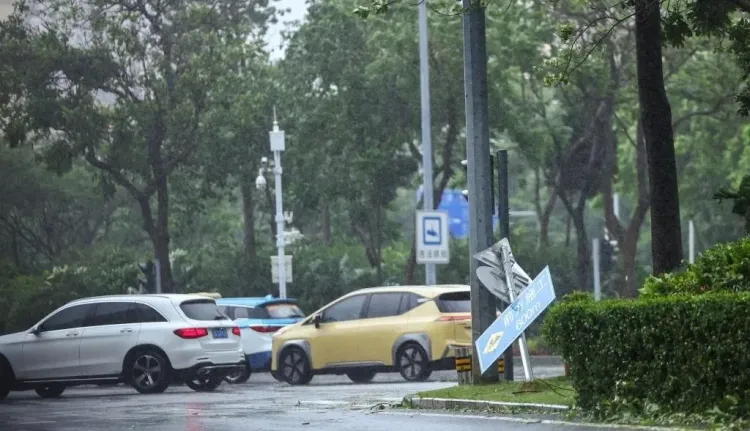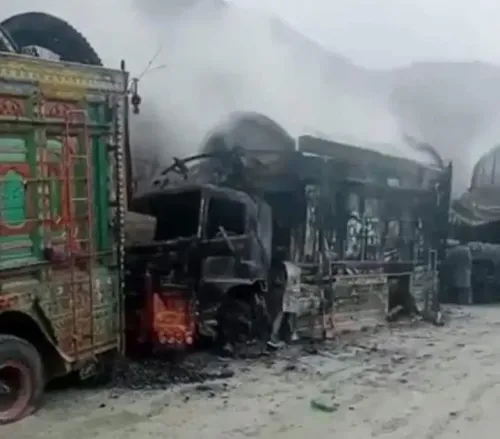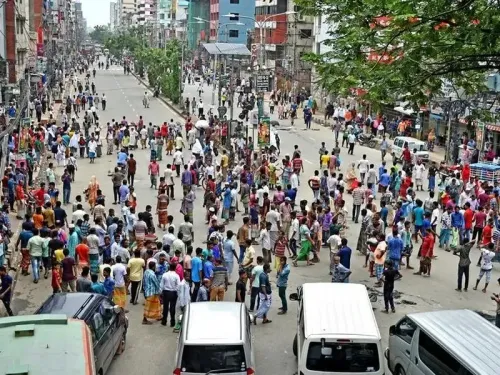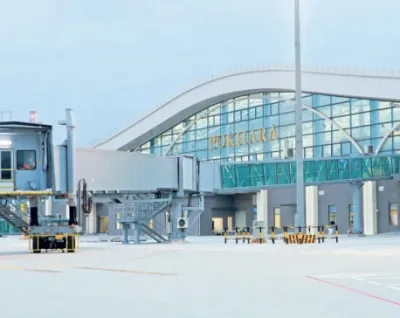What impact did Typhoon Wipha have after making landfall in Vietnam?

Synopsis
Key Takeaways
- Typhoon Wipha has caused severe disruptions in northern Vietnam.
- Maximum wind speeds reached 88 km/h, leading to significant damage.
- Infrastructure damage includes a partially collapsed bridge in Dien Bien.
- Power outages have been reported in several areas.
- Residents are taking precautions by securing fuel for generators.
Hanoi, July 22 (NationPress) Typhoon Wipha made its way onto the shores of northern Vietnam on Tuesday morning, unleashing heavy rainfall, power blackouts, and significant damage to infrastructure, as reported by local media outlets.
The typhoon impacted coastal regions between Hung Yen and Ninh Binh provinces, with maximum wind speeds reaching 88 km/h, categorizing it as a level 8-9 storm on the Beaufort scale, with gusts hitting level 11, according to the National Centre for Hydro-Meteorological Forecasting as reported by the Vietnam News Agency.
By approximately 8:30 a.m., a suspension bridge in Dien Bien province partially collapsed due to the relentless heavy rains, resulting in injuries to four individuals, the Voice of Vietnam reported.
Power interruptions were noted in sections of Tien Hai commune in Hung Yen province.
Residents were seen transporting fuel containers to local gas stations to fill up their generators, as reported by Xinhua news agency, referencing the local media outlet VnExpress.
In addition, central provinces like Thanh Hoa and Nghe An experienced rainfall amounts between 150 to 200 mm, which raised concerns about potential landslides and flash floods, according to local authorities.
Earlier on July 21, one fatality was confirmed along with four injuries in central Vietnam's Nghe An province due to the impact of Typhoon Wipha, as reported by the local newspaper Lao Dong (Labor).
The consequences of Typhoon Wipha, which is the third tropical storm to affect Vietnam this year, have resulted in damage to 357 homes and inundation of over 400 hectares of rice fields and other crops in the province, the report indicated.
The National Centre for Hydro-Meteorological Forecasting noted that Wipha was anticipated to gain strength by early Tuesday, impacting the coastal areas of northern Vietnam.
Local officials are advising residents to remain vigilant as the storm continues its approach to the mainland, according to state-controlled media.
Furthermore, Typhoon Wipha is expected to influence both northern and central regions of Laos, bringing light to moderate thunderstorms across most areas, along with heavy rainfall and strong winds in certain central and southern locations, as per a report from the Department of Meteorology and Hydrology under the Lao Ministry of Natural Resources and Environment.










